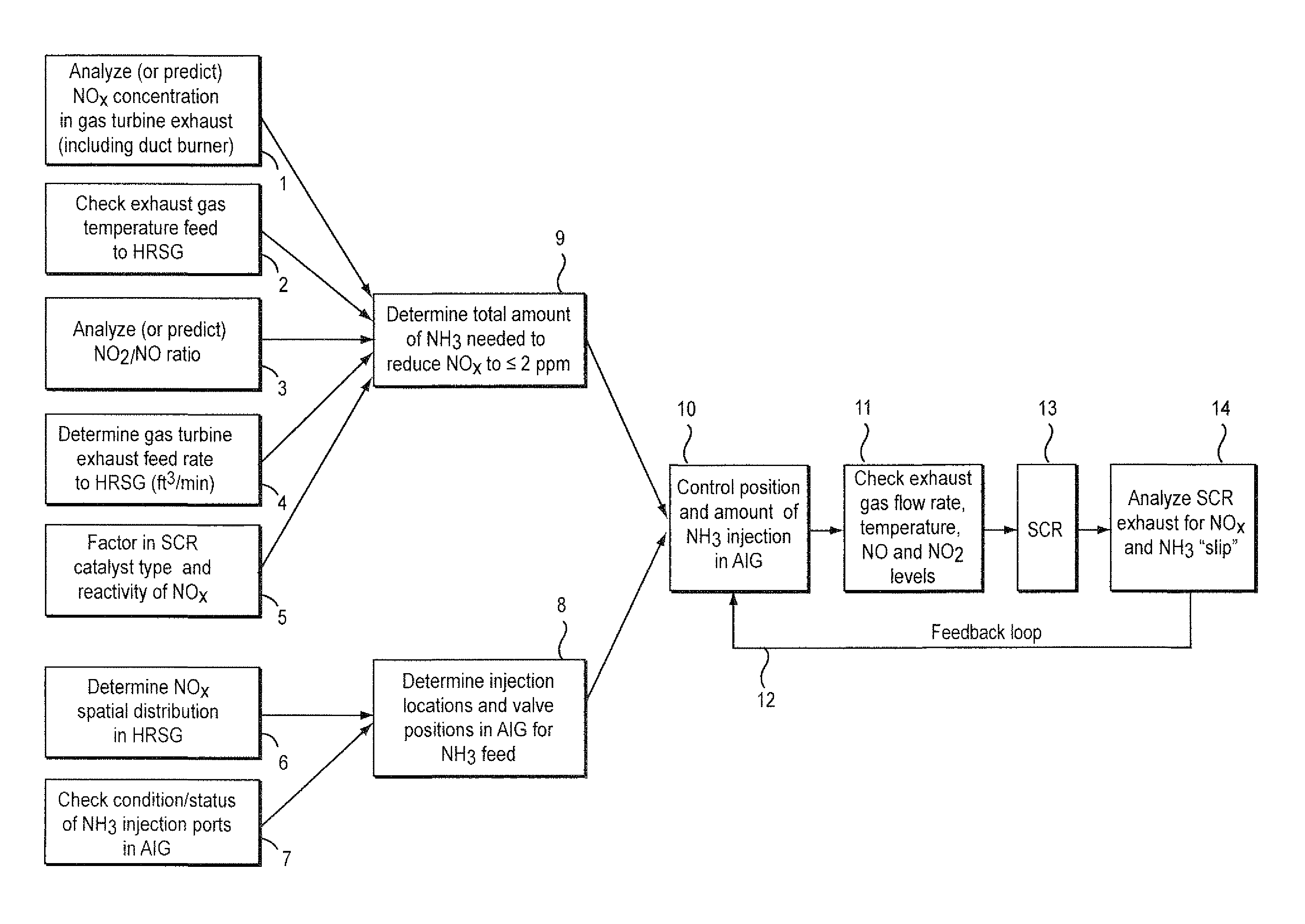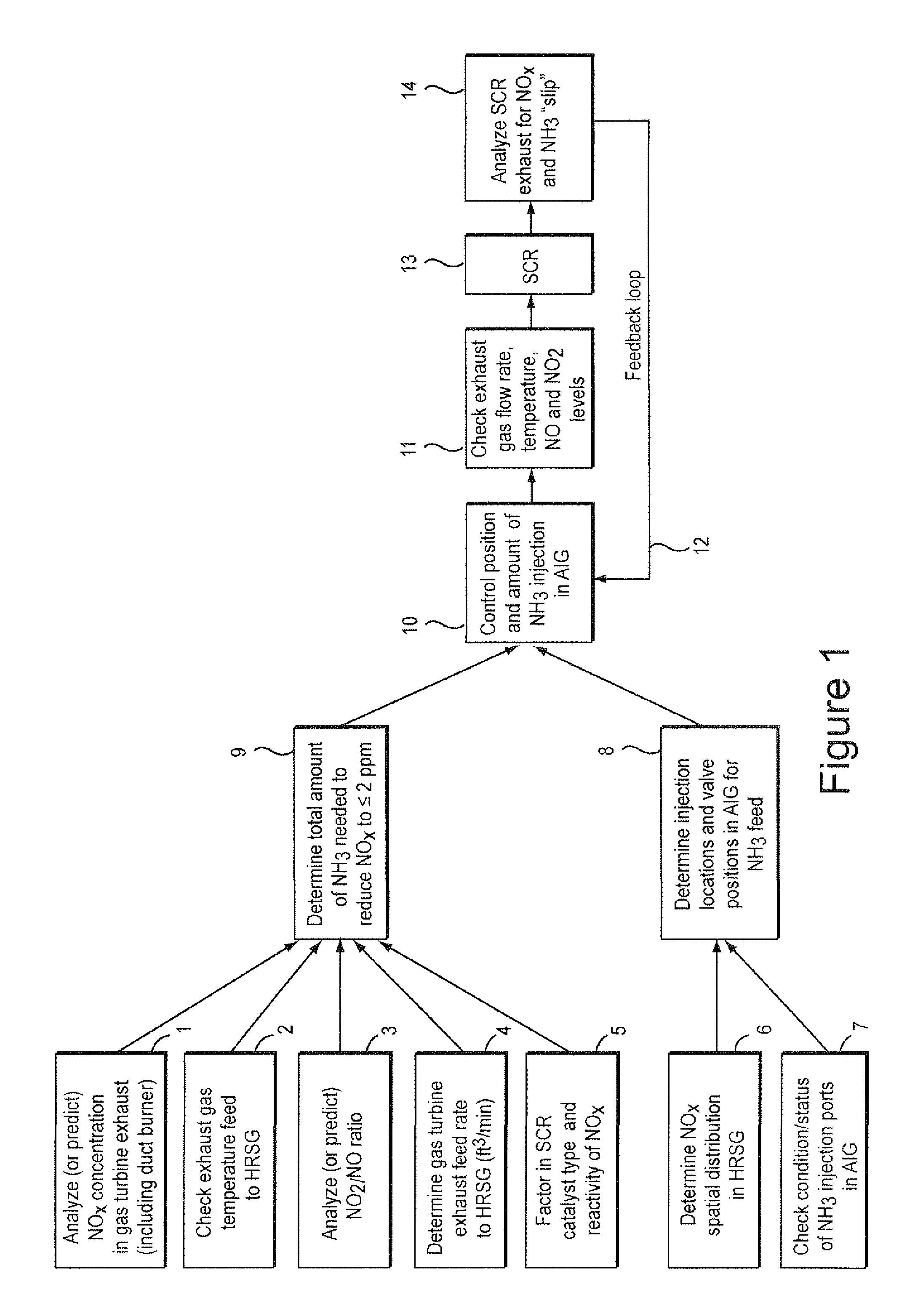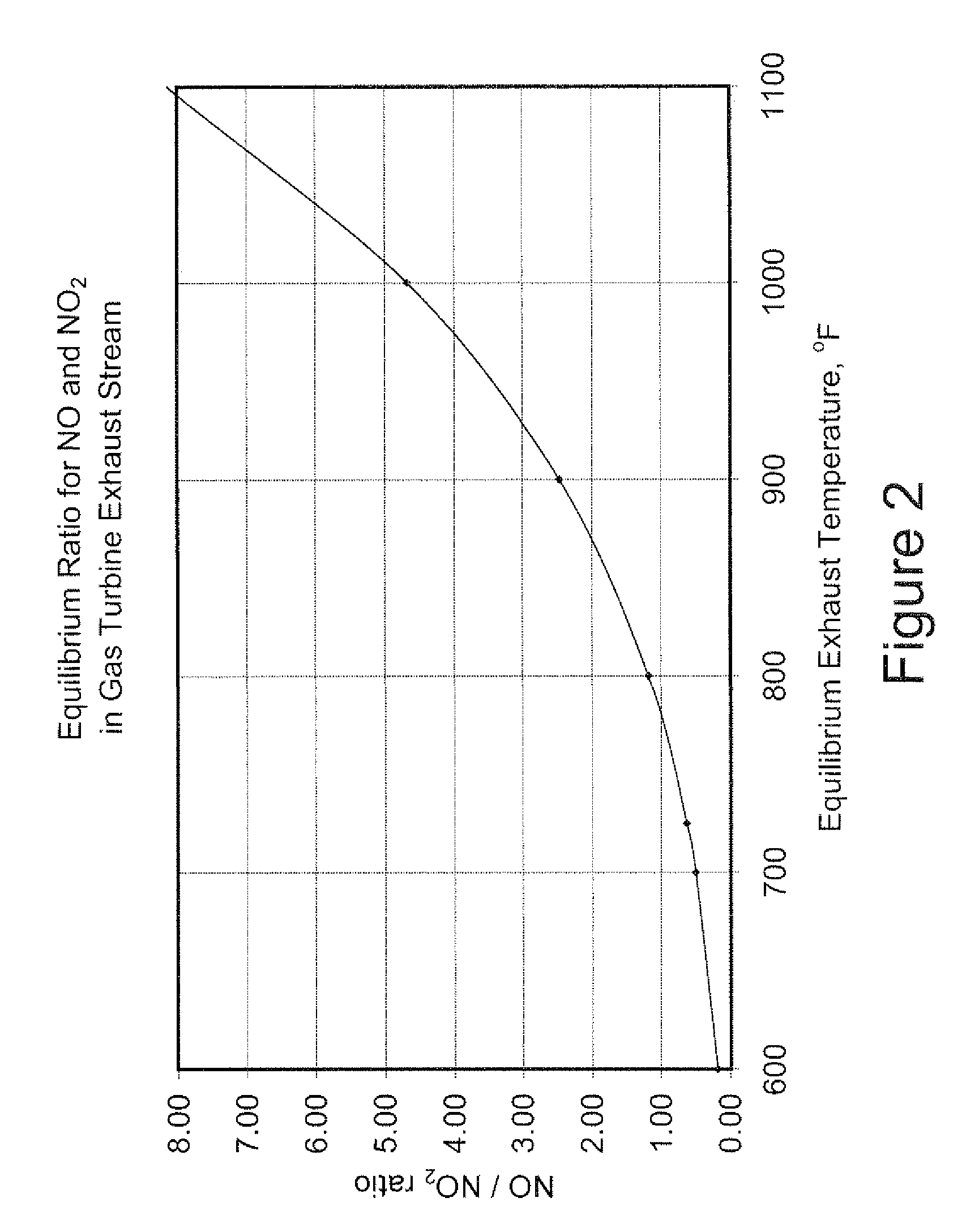Model-based tuning of ammonia distribution and control for reduced operating cost of selective catalytic reduction
a technology of ammonia distribution and control, applied in the direction of emission prevention, separation processes, instruments, etc., can solve the problems of preventing the achievement of either uniform nosub>x /sub>concentration, reducing the amount of nitrogen oxides, and increasing public concern for nitrogen oxides
- Summary
- Abstract
- Description
- Claims
- Application Information
AI Technical Summary
Benefits of technology
Problems solved by technology
Method used
Image
Examples
Embodiment Construction
[0024]As noted above, the present invention provides a model-based control system for ammonia injected into an exhaust stream to effectively eliminate NOx compounds in a gas turbine exhaust stream while reducing the amount and cost of ammonia and SCR catalyst used to treat the exhaust feeds. Preferably, the monitoring and control functions are carried out using a microprocessor with suitably configured software capable of reading input data (e.g., gas, temperatures, compositions, and flow rates) and making the process determinations described below.
[0025]The basic factors for controlling the amount of ammonia required to eliminate nitrogen oxide emissions using SCR and effectively eliminating ammonia slip downstream of the SCR fall into the following general categories: (1) the SCR gas inlet velocity distribution; (2) variations in SCR gas inlet temperature; (3) the amount and spatial distribution of NOx loading (the actual or projected NOx input to the SCR); (4) variations in the a...
PUM
| Property | Measurement | Unit |
|---|---|---|
| temperatures | aaaaa | aaaaa |
| temperatures | aaaaa | aaaaa |
| temperatures | aaaaa | aaaaa |
Abstract
Description
Claims
Application Information
 Login to View More
Login to View More - R&D
- Intellectual Property
- Life Sciences
- Materials
- Tech Scout
- Unparalleled Data Quality
- Higher Quality Content
- 60% Fewer Hallucinations
Browse by: Latest US Patents, China's latest patents, Technical Efficacy Thesaurus, Application Domain, Technology Topic, Popular Technical Reports.
© 2025 PatSnap. All rights reserved.Legal|Privacy policy|Modern Slavery Act Transparency Statement|Sitemap|About US| Contact US: help@patsnap.com



